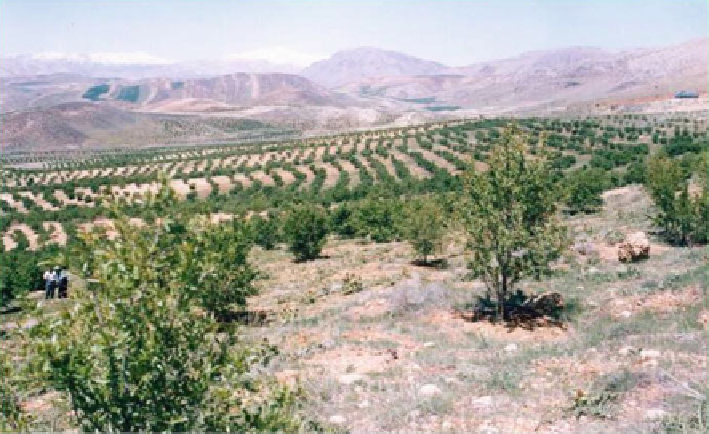Geoscience Reference
In-Depth Information
Fig. 18.8
Biological measures involving planting of trees and shrubs for rehabilitation of degraded
lands
A. canescens, Calligonum spp., Artemisia spp., Tamarix hispida, T. katchy, Robinia
pseudo acacia, Eucalyptus camaldulensis
, and some other drought tolerant species
were used for sand dune fixation and desert rehabilitation (Fig.
18.8
).
Physico-chemical operations (for temporary stabilization of unstable soils and
sand dunes) including oil mulch spraying. Spraying dunes with petroleum-derived
mulch has been used with success in some areas. Wind breaks, checkerboards, etc.,
which provide suitable conditions for plantation and/or natural regeneration (see
Since the beginning of the sand dune fixation project up to now, more than
one million hectares (Mha) has been brought under control. Presently, the average
biological production in the reclaimed land is 200 kg and total annual production
amounts to 200,000 t. Of the 8 Mha that have been designated for rehabilitation
and reclamation programs; 4 Mha are now in the process of implementation. The
program for short to medium-term (up to 2025) is to manage 11 Mha of desert and
desertified area by the government and 12 Mha by private and social activities with
cooperation of government by technical and fundamental aid and financial support
of banks. The rehabilitators will be the owners of the reclaimed areas -according to
the new law.
Community involvement is important and participatory approaches are the
key. The National Action Plan to combat desertification national plan to combat
desertification was ratified in 2004 and this placed an emphasis on community
participation (Figs.
18.9
and
18.10
).

Search WWH ::

Custom Search